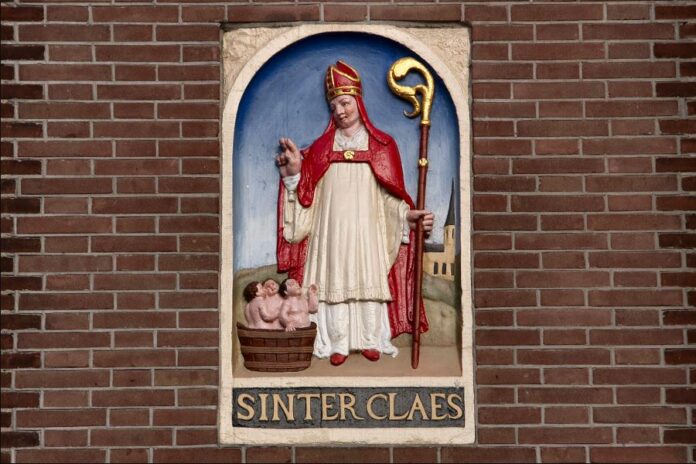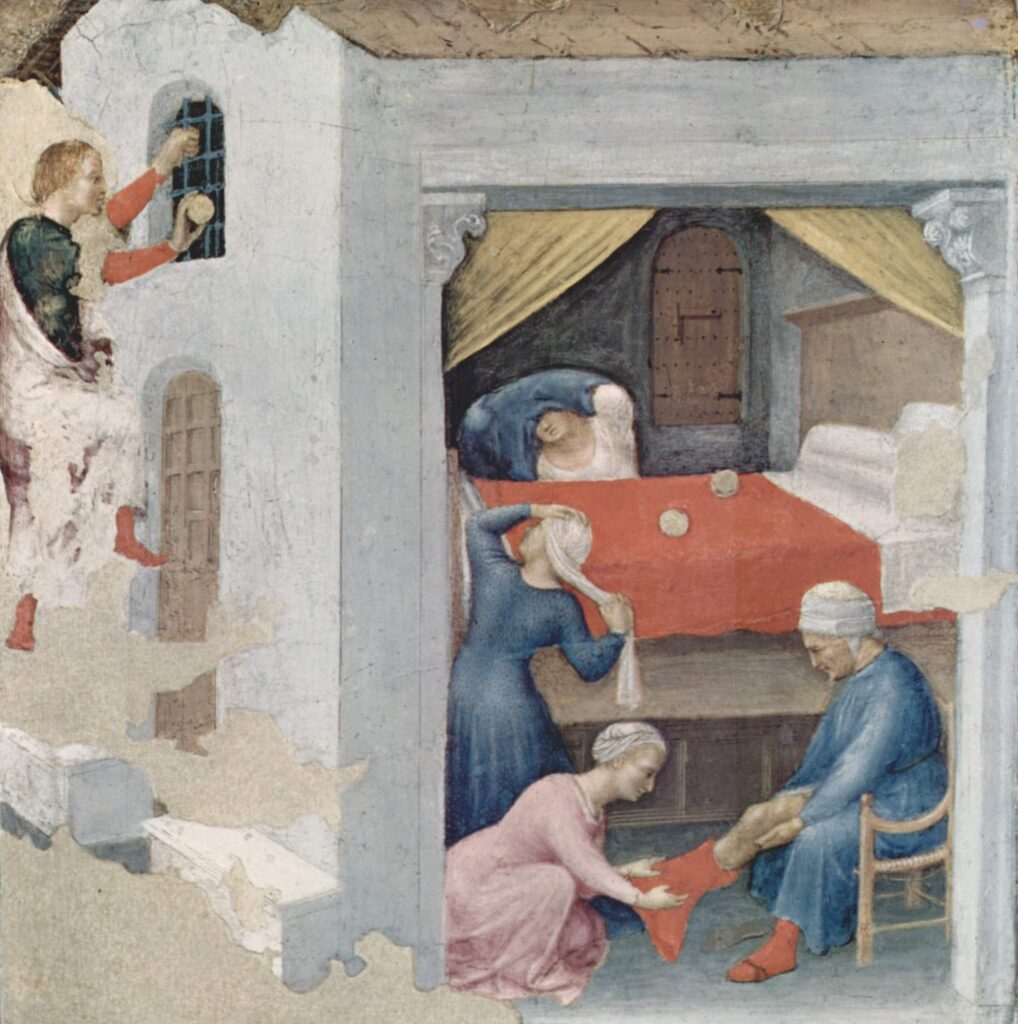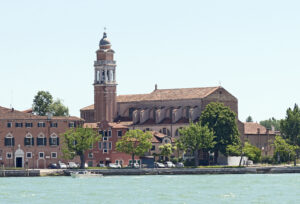
A person who wants to become a saint will have to perform at least one miracle. Nicholas of Myra performed a few and those signs one can see around December 5th, Saint Nicholas Eve, when his birthday is celebrated with presents and sweets. EN Readers might not know that these sweets symbolise some of the miracles he performed. The marzipan pigs in the confectionary shop windows, for example, stand for three rescued boys, a scene depicted on the plaque in the picture above.
The miracle depicted on the plaque illustrates the story of the three boys who had been killed by an evil butcher. The butcher had put the boys into a vat of brine and intended to sell their flesh as pork. Saint Nicholas heard of this gruesome act, prayed to God and so restored the boys to life. In another version of the tale, it was an evil innkeeper who had murdered three theology students. Saint Nicholas, who was staying at the inn, had bad dreams in which the act was revealed to him, upon which he brought the students back to life. The marzipan piglets sold around December 5th refer to this story.
Dowry

Another miracle ascribed to Saint Nicholas is that of the daughters of a poor man. The father could not provide dowries for his three daughters, so they could not marry. When Saint Nicholas heard they might be forced to earn a living by undesirable means, he intervened and threw a golden ball through their window on three consecutive nights. In another version he threw coins, which links to the scattering of sweets and the presents in the shoes. Whatever the form of the gold, the three girls were spared a fate worse than someone marrying them for their money, one supposes. The bags with chocolate coins wrapped in gold and silver foil symbolise this miracle. Some scholars link the tangerines from Spain to the three golden balls, which is why the Greek/Turkish bishop turned Sinterklaas is said to come from Spain.
Ports
Finally, Saint Nicholas is associated with ports. He is said to have calmed the seas when sailors were crying out that their ship was sinking. Although there’s been a mixup, and the actual saint to perform this miracle is said to be Nicholas of Sion, many port cities have Saint Nicholas of Myra as their patron Saint. Nicholas, born in Greece in Patara, bishop of Myra -currently in Turkey- is buried in Bari, Sicily as well as in Venice, Italy. Bilocation as a miracle?

Written by: Greta Timmers for EindhovenNews
Souce: Wikimedia










